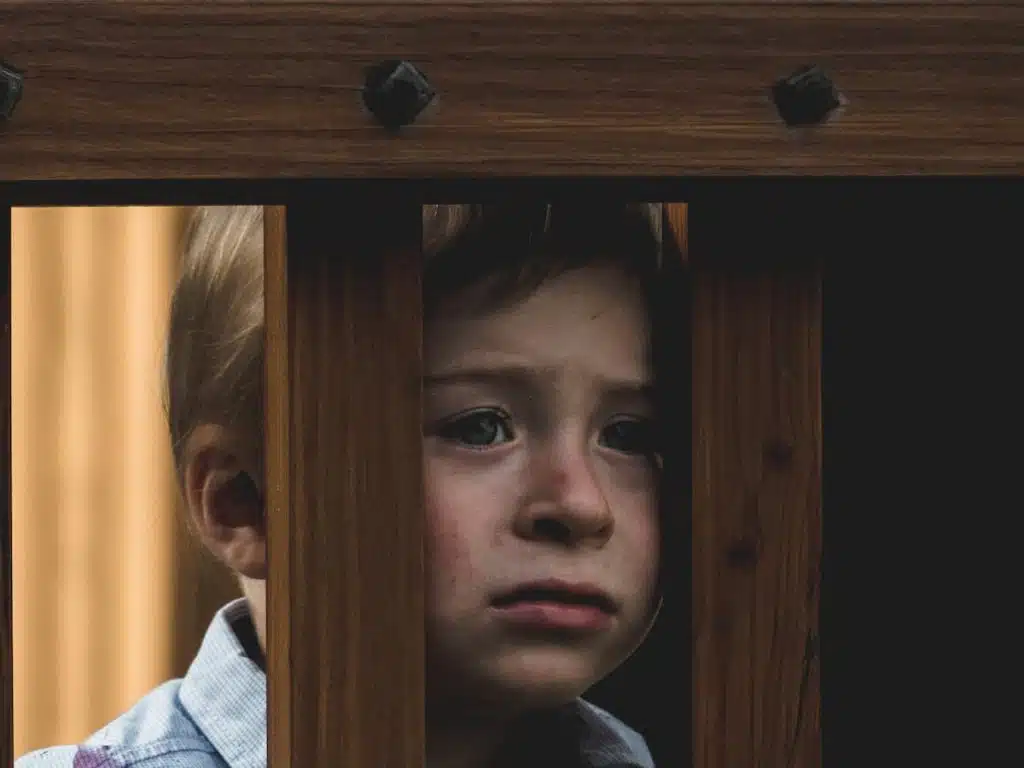Select any Serious Case Review from a decade ago and the report will likely point to two areas of deficit: information sharing and multi-disciplinary working – with the two going hand in hand.
Undoubtedly, multi-disciplinary or multi-agency working is far more established today but is it completely embedded in social work practice?

The Social Care Institute for Excellence states: “Serious Case Reviews (SCRs) were established under the Children Act (2004) to review cases where a child has died and abuse or neglect is known or suspected. SCRs could additionally be carried out where a child has not died, but has come to serious harm as a result of abuse or neglect. They aim to establish learning for agencies and professionals to improve the way that they work together to safeguard children. A local safeguarding children board (LSCB) can commission a review for any case where it suspects anything can be learned to improve local practice.”
But in a sector where reviews, inquiries, evaluations, inspections are produced almost weekly within one area of the social work sector or another, multi-disciplinary working and information sharing still comes to light as a problematic area.
Victoria Climbie
Multi-agency working was highlighted in Lord Laming’s inquiry report Lord Laming’s report states:published in 2003 into the tragic death of Victoria Climbie who died in 2000 aged eight years old at the hands of her great aunt Marie-Therese Kouao and her boyfriend Carl Manning. The child died with 128 separate injuries on her body in which was described by the pathologist as “the worst case of child abuse” she had ever seen.
“Two months after Victoria’s death in February 2000, an internal review of district cases highlighted serious practice failings verging on the acute and dangerous in the Hornsey office. These included procedures routinely not being followed, an absence of timescales, investigations not being recorded, little evidence of multi-agency planning particularly in family support cases, and cases left to drift.”
Furthermore, in trying to find an explanation for the lack of useful action by Brent CPT, Lord Laming was helped by another exchange between PC Dewar and her Counsel. He asked her, “In a multi-agency investigation such as this, who did you understand the lead agency to be?” PC Dewar replied that she understood it to be social services.
“This was a view she held in common with several other police officers who gave evidence to the Inquiry. If the impression given by their evidence is representative, it would appear that child protection officers, for some considerable time, have been unsure about exactly where they fit within the Working Together system and what their precise responsibilities are in the investigation of the possible deliberate harm of a child,” said the report.
“The police are the ‘lead agency’ in a criminal investigation, and I am concerned that the good intentions of multi-agency decision-making, information sharing and joint working may have now led to a blurring of roles, uncertainty about who should take what action, and a convenient excuse for poor investigation. PC Dewar’s view that social services were the lead agency in the investigation of Victoria’s case would appear to be reflective of a common view held by child protection officers in the MPS,” the report added.
Working Together to Safeguard Children
In fact, following Lord Laming’s inquiry in 2003, the acceptance by the government of all of his recommendations and the government’s detailed response and action plan published in May 2009 statutory guidance ‘Working Together to Safeguard Children’ was updated in 2010. Many of Lord Laming’s recommendations are reflected in the revised guidance and it was also updated to reflect developments in legislation, policy and practice relating to safeguarding children.
Working Together sets out how organisations and individuals should work together to safeguard and promote the welfare of children and young people in accordance with the Children Act 1989 and the Children Act 2004.
"It is important that all practitioners working to safeguard children and young people understand fully their responsibilities and duties as set out in primary legislation and associated regulations and guidance,” said the guidance.
Lord Laming’s progress report, The Protection of Children in England: A Progress Report, made 58 recommendations relating to: leadership and accountability, support for children, inter-agency working, children’s workforce, improvement and challenge, organisation and finance and the legal framework. Twenty-three of these recommendations are addressed in the revised guidance.
The publication of the Every Child Matters Green Paper in 2003 alongside the formal response to the Inquiry into the death of Victoria Climbié, and followed by the Children Act 2004, set out ‘being safe’ as one of five important outcomes for children and young people.
In this context, three key provisions were:
● the creation of Children’s Trusts under the duty to co-operate
● the setting up of Local Safeguarding Children Boards (LSCBs)
● the duty on all agencies to make arrangements to safeguard and promote the welfare of children.

Professor Munro’s report
However, following Lord Laming’s report in 2003, Professor Eileen Munro was commissioned to review the social work system following several high-profile abuse cases, including the death of Baby Peter in 2007.
The review recommends that the government revise statutory, multi-agency guidance to remove unnecessary or unhelpful prescription and focus only on essential rules for effective multi-agency working and on the principles that underpin good practice. For example, it said, the prescribed timescales for social work assessments should be removed, since they distort practice. The underlying principle of timeliness is important and should be applied to the whole process of helping a child or young person, not just the early stage of assessment.
Munro stated that a major challenge in building a more responsive child protection system is helping a wide range of professions to work together well in order to build an accurate understanding of what is happening in the child or young person’s life, so the right help can be provided. In moving to a system that promotes the exercise of professional judgment, local multi-agency systems would therefore need to be better at monitoring, learning and adapting their practice. The review recommended regular review of cases becomes the norm and that the ‘systems approach’ is applied, in particular, to Serious Case Reviews to provide deeper learning to overcome obstacles to good practice
Munro also highlighted how, even at that time, financial resources were under increasing pressure, with interagency training is coming under threat. It would be regrettable if the strong platform of inter-disciplinary training built up in recent years was eroded, she said, adding that it is therefore important that LSCBs continue to make multi-agency training available, and draw on the partnership nature of the Board itself to encourage participation and LSCBs should evaluate such training.
The review proposed moving from a compliance to a learning culture given that the complexity of the multi-agency child protection system heightens the need for continual and reliable feedback about how the system is performing to enable organisations to learn about what is working well and identify emerging problems and so adapt accordingly.
“Child protection is a multi-agency business – social workers, schools, police and others are all involved,” Munro’s review said.
MASH
Multi-Agency Safeguarding Hubs started to be developed in 2011 in response to failures of agencies to work together to safeguard children and young people. In numerous serious case reviews and national reports such as the Munro Review of Child Protection the failure to share information in a timely and effective way has been highlighted as a common theme. MASH aims to facilitate more effective multi-agency working and promote professionals working together. As information is shared between partners it is hoped that this leads to high quality and timely safeguarding responses as safeguarding risk can be assessed more accurately.
A Home Office review of MASH in 2014 found that while the models appear different in presentation, they were all largely based upon three common principles: information sharing, joint decision making and coordinated intervention.
The review said multi-agency safeguarding hubs, which should include children’s social care, police, health, education, probation, housing and Youth Offending Service, were claimed to have led to:
- More accurate assessment of risk and need
- More thorough and driven management of cases – avoiding cases getting ‘lost’ in the system
- Better understanding between professions
- Greater efficiencies in processes and resources.
The agreed core functions of a multi-agency hub were listed as:
1.Acting as a single point of entry
2. Enabling thorough research of each case to identify potential risk
3. Sharing information between agencies
4. Triaging referrals
5. Facilitating early intervention to prevent the need for more intensive interventions at a later stage
6. Managing cases through co-ordinated interventions
Barriers to effective MASH’s include misunderstandings among professionals about what information can be shared, the inclusion of adults in multi-agency safeguarding with some feeling that there was a risk of adults and older people being overlooked by multi-agency hub and cultural barriers with some feeling too much emphasis had been placed on the role of structural factors in determining safeguarding practices.
Furthermore, assessment of performance was seen to be underdeveloped, risk thresholds were seen by some to be too high, resources and a lack of co-terminus boundaries were also raised as potential barriers.
“In some cases there was a lack of clarity as to who was accountable for the multi agency hub,” said the report.
Inspections of multi-disciplinary working
In 2018, Ofsted, Her Majesty’s Inspectorate of Constabulary, Fire and Rescue Services (HMICFRS) and the Care Quality Commission (CQC) and HMI Probation announced that they would be jointly inspecting and reporting on the impact of local multi-agency safeguarding arrangements on children through the joint targeted area inspection programme.
The most recent was the multi-agency response to child sexual abuse in the family environment published in February 2020 . The six local authorities visited were Bracknell Forest, Cornwall, Derby City, Islington, Shropshire and York.
The report found that the knowledge acquired by agencies and the systems put in place for dealing with child sexual exploitation are not being applied in the context of abuse within the family environment. As a result, frontline professionals are not equipped to know enough about perpetrators of child sexual abuse in the family environment: how to identify them, what their escalation patterns are and how to prevent them from abusing children.
- Professionals find this area of practice very difficult - professionals across all agencies lack the training and knowledge they need to identify and protect these children.
- There were pockets of good practice but this was not consistent.
- Preventative work is absent or focused on known offenders.
- Professionals rely too heavily on children to verbally disclose abuse – but as children are unlikely to disclose, professionals must know how to respond to the signs and symptoms of child sexual abuse.
- When children have displayed harmful sexual behaviour, often it is solely their behaviour, not the cause, that professionals respond to.
- Practice in this area is too police-led and not sufficiently child-centred. Too often, health agencies are not involved at all.
- Local partnerships do not always work together to respond to child sexual abuse, information is not shared, and decisions are made that leave children at risk of further harm.
- Child protection enquiries were too often carried out by just one agency when police and social care agencies should have worked together, supported by health professionals.
“Our findings highlight significant challenges for agencies, professionals and the government. As such, it is important for professionals working in this area to be well trained and appropriately resourced in order to prevent abuse happening and to identify and protect children at risk,” said the report.
Four areas of practice that could be improved to aid the identification of sexual abuse of a child earlier were identified in the inspection These areas are:
- ensuring that professionals in all agencies recognise the signs of abuse in the family and that they feel comfortable talking about it with children and families
- strong multi-agency information-sharing protocols in place across the local area
- consideration of all potential victims of the perpetrator
- equipping adults to see what is happening – we cannot rely on children to disclose
Inconsistent attendance by agencies at multi-agency decision-making forums was highlighted and sometimes partners, such as probation, were not invited when this was relevant, so not all relevant information could be shared.
“In a significant number of children’s cases evaluated by inspectors, there was a lack of effective multi-agency working, which meant that the perspectives, skills and insights that different agencies can bring were not evident,” said the report.
Positive outcomes
While multi-agency or multi-disciplinary working has indeed improved, it is safe to say that some problems exist. It is why WillisPalmer has built our services and reputation on a multi-disciplinary approach to ensure our expert professionals are working collaboratively with vulnerable children and families to ensure the best outcomes.
Not only do we think this is an ethical way to safeguard children, as a multi-disciplinary team can carry out an assessment in a timely way thus preventing the distress caused to children and families as they await the outcome, it prevents delays in cases and problems worsening. With Independent Social Workers, psychologists, psychiatrists and Family Support Workers working collaboratively, one assessment is completed within an eight-week timeframe, rather than a social workers carrying out a parenting assessment and concluding that a psychiatric perspective is needed. The families then have to wait for a psychiatric assessment to be carried out and the case drags on.
Furthermore, as has been highlighted above, a multi-disciplinary approach enables good information-sharing.
WillisPalmer Chief Executive Mark Willis: “WillisPalmer prides itself on our high standards providing independent social work and psychological services. We are particularly proud to be a genuinely multi-disciplinary organisation working intensively with vulnerable families to provide positive change in a bid to prevent children entering the care system unnecessary which is both costly to local authorities and not necessarily in the best interests of the child given that children in care have worst outcomes educationally than their peers.”
“Naturally there are cases where it is imperative that children are removed from the family home for their own safety where risks are too high to keep children at home. However, there are families – particularly in the current climate following the chaos of the COVID-19 pandemic – who have struggled with health, mental health or anxieties around finances during the restrictions who may be in need of help and support to improve their parenting capacity and communication with their children to provide a safe environment for them in the family home.”
“Research has shown that 85% of all the children in state care return home to their family network or home communities within five years, and an estimated 92% return eventually. If intensive support is not carried out within the family setting to improve their parenting capacity, these children are returning to the same problems that they were taken into care for in the first place,” he added.
“We are proud of our MFA service as an alternative service to costly residential assessments. We have now completed more than 20 MFA’s where we have achieved positive outcomes for children and their families. We are now building on its strengths and increasing our expertise within psychiatrists, psychologists, family support workers and expert social workers to enable us to continue to deliver this complex area of work,” concluded Mark Willis.


